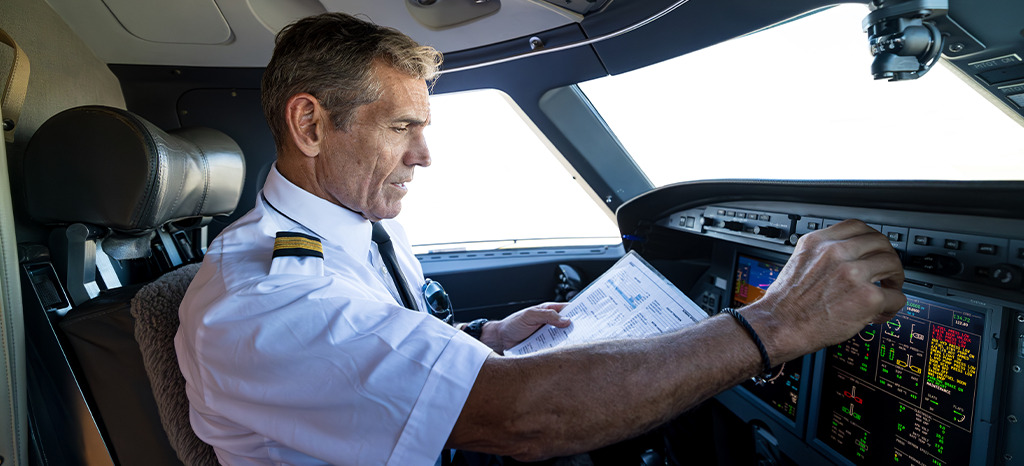
Global Aerospace Offers Valuable Insights on What Every Aging Pilot Should Know About Flying, Safety and Insurance
Important Considerations for Aging Pilots
/EIN News/ -- Morris Plains, July 22, 2024 (GLOBE NEWSWIRE) -- Whether at industry conferences or at various trade shows, conventions, and fly-ins, colleagues and industry professionals agree that an urgent challenge facing the insurance industry today is how best to serve an aging pilot population.
The issue is not unique to aviation insurance. Auto insurers, for example, assess higher premiums to drivers who are under 25 and over 60. The justification behind this approach — in certain contexts, backed by actuarial studies — is that reaction times often degrade as we get older, and experience is a key component for the younger end of the spectrum.
From an underwriting perspective, this is only one of many factors that may form part of a risk assessment. Costs to repair, downtime, parts availability, and rising costs are additional considerations that present industry wide hurdles. Age is just another component to consider.
Older… and Wiser
Any conversation about age and flying must be balanced in presenting the data. It’s true that the number of accidents increases for pilots 55 and older. However, older adults tend to have more free time and disposable income, so the increase may be explained by the flying frequency.
What’s more, the decades of experience that most older pilots have may offset the increase in their reaction times and other skills. Consequently, it’s not fair or accurate to draw a straight line from “Top of Their Game” to “Grounded” on an age graph. Plus, because pilots are required to have routine FAA medical or BasicMed exams, pilots are often healthier than the average person, so comparisons to the age-related skill loss in non-pilots are of little value.
How To Stay Airborne as You Age
What can pilots do to ensure they can continue pursuing their passion for flight as they age? As a first step, training and setting personal limits are the factors easiest to control. Any pilot, regardless of age, should consider when and how to gradually modify their flying habits to stay in sync with their skills.
Steps for staying safely airborne include:
- Get ongoing training. Whether with a Flight Risk Assessment Tool (FRAT) or an equivalent process, more frequent training beyond a Biennial Flight Review (BFR)—which is a requirement for pilots to maintain their license and competency—is recommended. These are commonly seen as minimum best practices.
- Know your limits. This may mean operating an aircraft that matches both mission and ability, and utilizing insights from industry experts and peers.
- Modify your missions. Taking shorter flights (especially on cross-country treks) and giving yourself more time to complete them can make flying safer and more enjoyable.
- Carefully choose your flight paths and conditions. If possible, avoid busy airspace and fly when the air is smoothest.
- Have a copilot. This is particularly important with IFR flights.
How Insurers Help Older Pilots Keep Flying
From the insurance provider and broker perspectives, there are ways to construct a policy appropriate to the risk profile. This can include deductibles, two-crew/mentor pilot requirements and liability-only options, to name just a just a few. These solutions can be worked out with your insurance broker or agent.
There are companies that will continue to provide coverage if there are no major changes to the risk. You should establish a long-term relationship with those carriers as you get older.
Addressing an Age-Old Problem: Planning Is the Key
Pilots are methodical by nature; you have to be. Your safety and that of everyone affected by your flights requires it. That same proactive approach is vital when it comes to identifying and addressing age-related challenges.
Fortunately, you can stay airborne by continuing your training, ensuring the flights you take and equipment you use are commensurate with your skills and working with an insurer and a broker committed to helping you keep flying safely.
About Global Aerospace
Global Aerospace has a century of experience and powerful passion for providing aviation insurance solutions that protect industry stakeholders and empower the industry to thrive. With financial stability from a pool of the world’s foremost capital, we leverage innovative ideas, advanced technology and a powerful synergy among diverse team members to underwrite and process claims for the many risks our clients face. Headquartered in the UK, we have offices in Canada, France, Germany, Switzerland and throughout the United States. Learn more at https://www.global-aero.com/
Global Aerospace Media Contact
Suzanne Keneally
Vice President, Group Head of Communications
+1 973-490-8588

EIN Presswire does not exercise editorial control over third-party content provided, uploaded, published, or distributed by users of EIN Presswire. We are a distributor, not a publisher, of 3rd party content. Such content may contain the views, opinions, statements, offers, and other material of the respective users, suppliers, participants, or authors.



